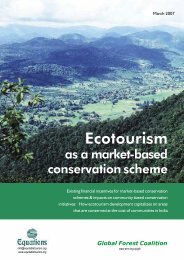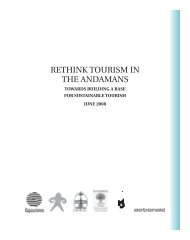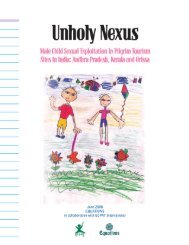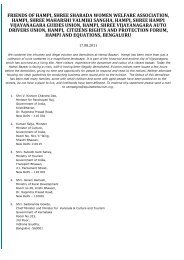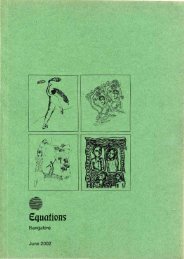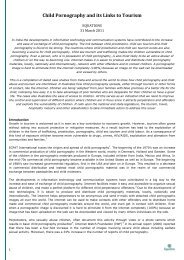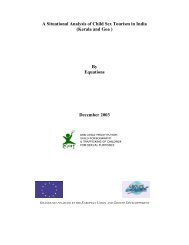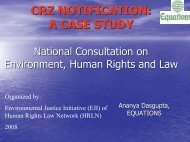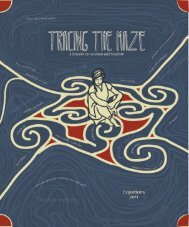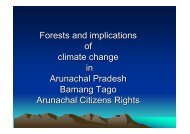Institution of Local Self Governance and its Linkages with Tourism
Institution of Local Self Governance and its Linkages with Tourism
Institution of Local Self Governance and its Linkages with Tourism
You also want an ePaper? Increase the reach of your titles
YUMPU automatically turns print PDFs into web optimized ePapers that Google loves.
the tribal areas not included in the fifth <strong>and</strong> sixth schedules <strong>of</strong> theConstitution.Based on the Bhuria committees recommendations for self rule to thetribal population, Parliament extended certain provisions in the 73'dAmendment act meant for the Panchayats to the Scheduled Areas.Accord ingly, a bill was introduced in the Parliament on 19 December1996 <strong>and</strong> subsequently, the President's gave his assent on 24December 1996 after which it became a part <strong>of</strong> the Constitution.Scheduled Areas under the fifth Schedule includes dhra Pradesh,Jharkh<strong>and</strong>, Gujarat, Himachal Pradesh, Madhya Pradesh,Chattisgarh, Maharashtra, Orissa <strong>and</strong> Rajasthan. The tribal areasunder the sixth Schedule include Meghalaya, Mizoram, Nagal<strong>and</strong><strong>and</strong> Tripura in the North Eastern region.The outst<strong>and</strong>ing features <strong>of</strong> the Act (extension <strong>of</strong> ScheduledAreas) includes the following:The most notable feature <strong>of</strong> this act is that the Gram Sabha has beenmade the nucleus <strong>and</strong> the soul <strong>of</strong> all activities. Though 73'd Amendmenthas a provision fo r the constitution <strong>of</strong> the gram sabha but it is the Statelegislatures, which has been endowed by law to define the powers <strong>and</strong>fu nctions <strong>of</strong> the Gram Sabha. The extended act however, has made theGra m Sabha the soul <strong>of</strong> the democratically decentral izedadministrative structure, the symbol <strong>of</strong> tribal identity, traditionalcustoms <strong>and</strong> practices, <strong>and</strong> community assets. Any <strong>of</strong> the statelegislation on the Panchayats for the tribal areas has to be inagreement <strong>with</strong> the customary law, social <strong>and</strong> religious practices, <strong>and</strong>traditional practices <strong>of</strong> community resources.A village has been recognized as a habitation or a group <strong>of</strong> habitationsor hamlet or a group <strong>of</strong> hamlets comprising <strong>of</strong> community <strong>and</strong> managing<strong>its</strong> affairs in accordance <strong>with</strong> the traditions <strong>and</strong> customs. Since the tribalsettlements are scattered <strong>and</strong> they live in small un<strong>its</strong>, each unit can bedeclared as a village.The m<strong>and</strong>atory provisions <strong>of</strong> the extended Act are:1) Every village is to have a Gram Sabha consisting <strong>of</strong> persons whosenames are included in the electora l rolls for the Panchayats at thevillage level. Every Gram Sabha is empowered to safeguard <strong>and</strong>preserve the traditions, customs <strong>and</strong> cultural identity <strong>of</strong> thepeople, community resources <strong>and</strong> settling local disputes41



